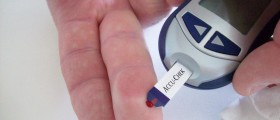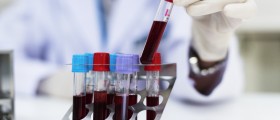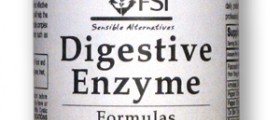
Hemoglobin is a metalloprotein essential for transfer of oxygen and carbon dioxide. It contains iron and in order to perform its function the level of hemoglobin must be optimal. Hemoglobin is checked during routine laboratory blood tests and any change in its level points to certain pathological states in the body. In case there is not enough hemoglobin in the body the person will experience certain symptoms and signs that result from improper oxygenation of tissues (there is not enough hemoglobin to supply all the tissues with desirable amounts of oxygen). Even if there is too much hemoglobin in the body there are certain symptoms and signs and the body may suffer.
How to Determine the Amount of Hemoglobin in the Body?
It is rather easy to determinate and measure the level of hemoglobin. Patients are taken blood samples and with the assistance of the advanced and very sophisticated machines the exact level of hemoglobin (as well as the amount and number of other blood components) are easily measured. Hemoglobin is measured in specific units (gm/dL). Together with the actual level of hemoglobin the paper that contains the measured level of hemoglobin also contains the range of hemoglobin that is considered normal. This way it is easy for a doctor to check whether a patient's level of hemoglobin is within the optimal range, is reduced or increased.
Normal Levels of Hemoglobin in Different Groups
There are certain differences when it comes to normal range of hemoglobin. For example, the level of hemoglobin in men is normally higher that in women. Furthermore, the level of hemoglobin is also different in new born babies and in children. And finally, there is a difference between elderly men and elderly women.
Normal hemoglobin level of new born babies is between 17 and 22 gm/dL. Furthermore, children normally contain 11-13 gm/dL of hemoglobin. In adults the level of hemoglobin in women ranges from 12 and 16 gm/dL while in men it is between 14 and 18 gm/dL. And finally, in elderly population the level of hemoglobin in women ranges from 11.7 and 13.9 gm/dL while in men it is between 12.4 and 14.9 gm/dL.
In case there are certain changes in level of hemoglobin they are commonly associated with decrease of this precious substance. So in majority of people the change in hemoglobin levels is in a form of insufficient amount of hemoglobin. This is so called anemia and it leads to specific symptoms and signs such as general weakness, pallor, dizziness and in severe cases shortness of breath and tachycardia. High level of hemoglobin is not so common and it occurs in patients suffering from emphysema, certain tumors, polycytemia rubra vera and in case of abuse of the drug erythropoietin.

















Your thoughts on this
Loading...